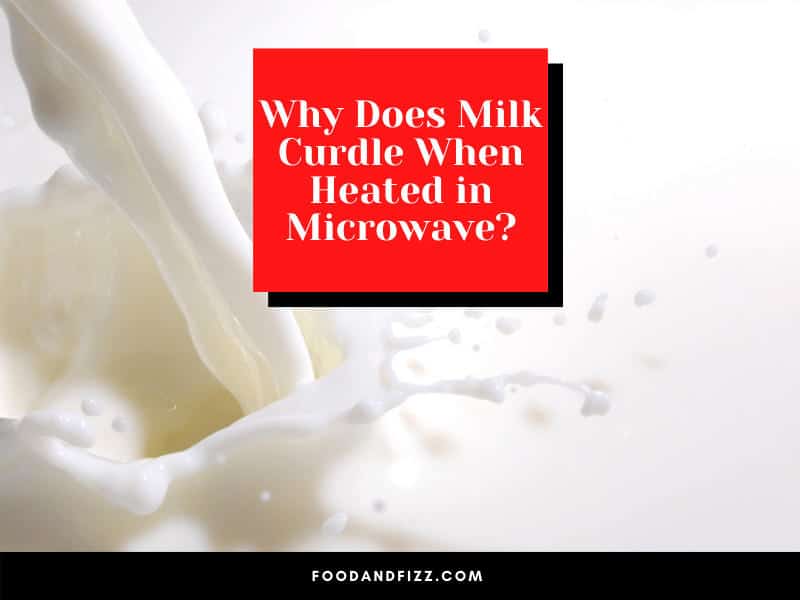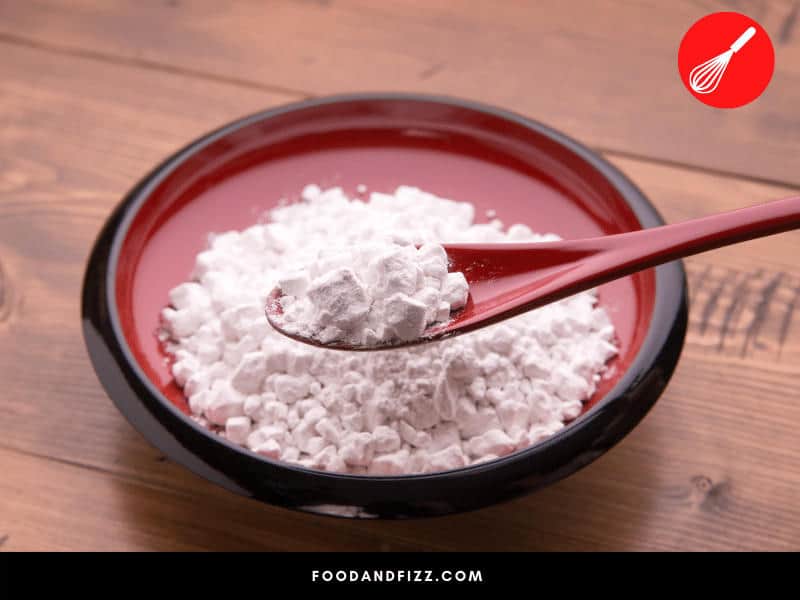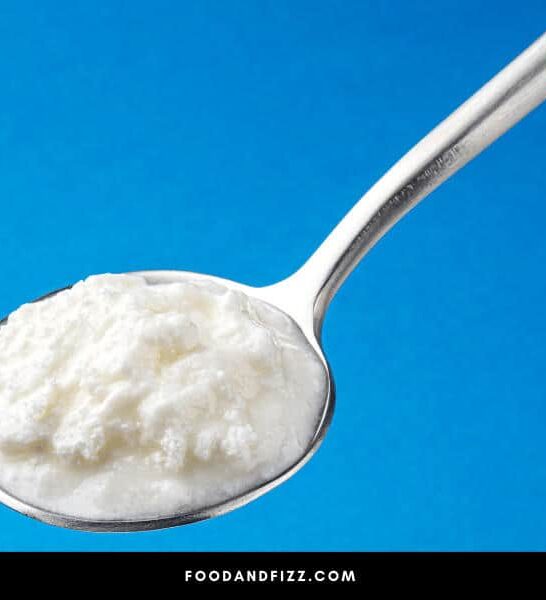Do you like to heat up your milk in the microwave? If so, you’re not alone – many people enjoy a warm cup of milk on a cold day. However, have you ever noticed that milk curdles when heated in the microwave?
This can be a bit confusing since most people assume that microwaves are supposed to heat things up evenly. So what’s going on here? Why does milk curdle when microwaved?
Milk Curdles When Heated in Microwave
When the pH level of milk starts to drop due to heat, the protein molecules that make up the milk liquid will start to gather with one another and form small clumps in the liquid. The lumps form faster in warmer temperatures and will float to the top of the milk.

What Happens to Milk To Make it Curdle
You might remember from science class but in order to make a solution like milk you need a mostly liquid homogenous mixture of two or more substances.
One of the main parts of the solution is liquid while a solute is a dissolved substance. The solute is what’s dissolved in the liquid to make up the solution and in milk, that solute is going to be fat globules and proteins.
Milk is known as a colloidal solution where one substance has been divided into a ton of smaller particles that disperse in the liquid substance.
This type of colloidal structure is entirely dependent on the pH levels of the mixture. The more you mess with the pH level, the more the colloidal structure is going to change.
As you heat up your milk in the microwave, the heat lowers the pH levels and causes the floating protein and fat molecules to start attracting to each other instead of floating freely within the solution.
This is why your milk curdles when you heat it up in the microwave and you’ll see clumps form on the surface of the milk.

How to Heat Milk Without It Curdling
There are some tricks you can use to heat up milk without it curdling. One is to slowly heat up the milk on the stovetop instead of using the microwave.

The gradual heating process can help milk stay in a liquid consistency without the protein and fat molecules forming together. The faster you heat up milk the quicker clumps will form.
If you are heating your milk in the microwave and you are seeing curdling action then you should only heat up your milk for short periods of time. You can also change the heating power of your microwave and turn it down so it heats up your milk slowly instead of too quickly.
You can also add a bit of starch to your milk before heating it up. Throw in a little cornstarch or flour in order to prevent the curdling process from happening.

Avoid putting in any acids like lime juice or lemon juice into the milk when heating because the acids will quicken the curdling process.
Don’t heat up your milk when salt is added because this will also change the chemical structure of your milk and cause curdling.
Will All Milk Types Curdle the Same?
You may have a specific type of milk you are using at home and you find it always curdles.
What you may want to try is having a go at a different type of milk so you can still heat it up without all the clumps forming.
Any milk with a higher fat percentage is going to be better for heating because it doesn’t curdle as quickly.
Whole milk, for example, is going to have a higher fat percentage than skim milk and is less likely to curdle.
If you are someone who doesn’t want all the extra fat in your diet then you can also try using evaporated milk which still has a high-fat content but is not as high as whole milk.
You can also try using higher quality milk that has been homogenized because this means the fat molecules have been evenly dispersed in the liquid.
If you are still having trouble then you can mix two different types of milk together such as cow’s milk and goat’s milk. The combination can help prevent curdling.

How to Know When Milk Has Gone Bad
If your milk has started to curdle from heating it too much in the microwave then it’s not going to be safe for drinking.
You may still be able to use it in recipes but if you want to drink it then you should know how to tell when milk has gone bad.
If you smell any odor coming from the milk then it’s time to toss it.
When milk starts to form clumps and has chunks in it, this is another sign that the milk has gone bad.
You’ll also notice the texture and color of milk changes when it goes bad. The milk will have a sour smell and taste to it as well.
Conclusion to Milk Curdles When Heated in the Microwave
When you heat milk in the microwave it causes the proteins and fat molecules to vibrate and this can cause them to clump together.
If you are heating your milk in the microwave and you are seeing curdling action then you should only heat up your milk for short periods of time.
Frequently Asked Questions to Milk Curdles When Heated in Microwave
Is Curdled Milk Safe to Drink?
Curdled milk is no longer safe to drink because the chemical structure of the milk has changed and it will no longer have a pleasant taste or smell.
Does Curdled Milk Mean It’s Spoiled?
When milk curdles it means the chemical structure has changed and it’s no longer good to drink, but it doesn’t necessarily mean it’s spoiled. You can still use curdled milk in recipes because the heat from cooking will kill any harmful bacteria that may be present.
Can You Reheat Curdled Milk?
You can still reheat curdled milk but it’s not going to taste very good. The best way to avoid curdling milk is by slowly heating it up on the stovetop or using a lower power setting on the microwave.
You can also change the heating power of your microwave and turn it down so it heats up your milk slowly instead of too fast.

